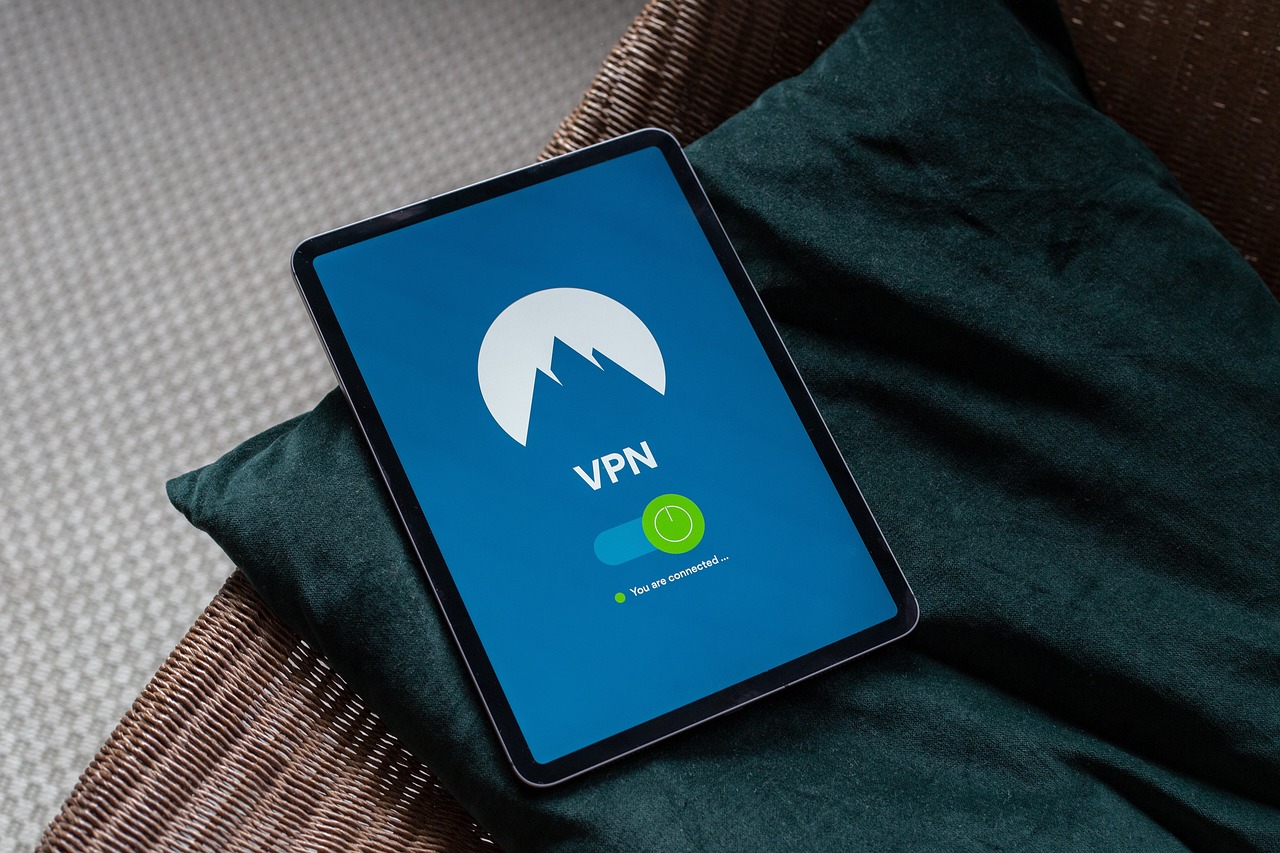Cybersecurity Challenges in the Digital Age
In our rapidly evolving digital landscape, the importance of cybersecurity cannot be overstated. As we embrace the conveniences of technology, we also open the door to a myriad of challenges that threaten our personal and organizational data. Cyber threats have become more sophisticated, making it essential for individuals and businesses alike to stay informed about the potential risks and how to mitigate them. This article dives deep into the various cybersecurity challenges we face today, shedding light on the threats, vulnerabilities, and the strategic measures required to combat these issues effectively.
As technology advances, so do cyber threats. The digital age has ushered in an era where cyberattacks are not only frequent but also increasingly sophisticated. From ransomware to data breaches, the landscape is fraught with dangers that can cripple organizations. Recent statistics reveal that a business is attacked every 39 seconds, highlighting the urgency for robust cybersecurity measures. The rise of the Internet of Things (IoT) has further complicated matters, as each connected device presents a potential entry point for cybercriminals.
Identifying common vulnerabilities is crucial for organizations. Cybercriminals are always on the lookout for weaknesses to exploit, and understanding these vulnerabilities can significantly enhance an organization's security posture. Some prevalent weaknesses include:
- Outdated Software: Failing to update software can leave systems open to attacks.
- Human Error: Mistakes made by employees often lead to security incidents.
- Weak Password Practices: Poor password management can compromise security.
Human error remains a significant factor in cybersecurity breaches. Despite advancements in technology, the human element is often the weakest link in the security chain. For instance, an employee might inadvertently click on a malicious link in an email, leading to a data breach. It's essential for organizations to recognize that even the most sophisticated security systems can be undermined by simple mistakes.
Phishing attacks are a common method for cybercriminals to deceive individuals. These attacks often come in the form of seemingly legitimate emails that prompt users to provide sensitive information. Recognizing these tactics is crucial; look for signs such as:
- Unusual sender addresses.
- Generic greetings instead of personalized ones.
- Urgent language that creates a sense of panic.
Weak password management can compromise security. Many individuals and organizations still rely on easily guessable passwords, making it easy for cybercriminals to gain unauthorized access. Establishing strong password policies and educating users on the importance of unique, complex passwords is vital in the fight against cyber threats.
Technology can also introduce vulnerabilities. Outdated systems and software not only lack the latest security features but also become prime targets for attackers. Regular updates and patches are essential to maintain a robust security posture. Organizations must adopt a proactive approach to cybersecurity by routinely assessing their systems for vulnerabilities.
Cyberattacks can have devastating effects on businesses. The repercussions extend beyond immediate financial losses; they can significantly impact an organization's reputation and operational capabilities. Understanding these impacts is crucial for developing effective response strategies.
The financial implications of a cyber breach can be severe. Costs associated with recovery, fines, and lost revenue can quickly add up. A study by IBM revealed that the average cost of a data breach is approximately $3.86 million. This staggering figure emphasizes the need for organizations to invest in cybersecurity measures to prevent such incidents.
Beyond finances, reputational damage can hinder business growth. Trust is a cornerstone of any successful business, and a cyber incident can erode that trust in an instant. Customers may think twice before engaging with a company that has suffered a breach, leading to long-term consequences.
Implementing effective cybersecurity strategies is essential. Organizations must adopt a multi-layered approach to security, incorporating various measures to strengthen their defenses against cyber threats. This involves not just technology but also people and processes.
Training employees on cybersecurity best practices is vital. Awareness programs can significantly reduce the likelihood of human error leading to security incidents. Regular training sessions should cover topics such as recognizing phishing attempts, safe browsing habits, and the importance of strong passwords.
Conducting regular security audits helps identify vulnerabilities. Proactive assessments are crucial in maintaining robust security. Organizations should not wait for a breach to occur; instead, they should continuously evaluate their security measures to ensure they are effective against evolving threats.
As technology evolves, so will cybersecurity challenges. Emerging trends such as artificial intelligence (AI) and machine learning are beginning to play a significant role in enhancing cybersecurity measures. These technologies can analyze vast amounts of data to detect anomalies and respond to threats more effectively, paving the way for a more secure digital environment.
AI is transforming cybersecurity. By leveraging machine learning algorithms, organizations can automate threat detection and response, significantly reducing the time it takes to mitigate risks. This evolution allows cybersecurity teams to focus on more complex issues while AI handles routine tasks.
Staying compliant with evolving regulations is critical. New laws and regulations regarding data protection are continuously being introduced, impacting how organizations manage their cybersecurity practices. Keeping up with these changes is essential for maintaining compliance and avoiding hefty fines.
1. What are the most common types of cyber threats?
Common types of cyber threats include phishing attacks, ransomware, malware, and data breaches.
2. How can organizations protect themselves from cyber threats?
Organizations can protect themselves by implementing strong security measures, conducting regular training for employees, and performing regular security audits.
3. Why is employee training important in cybersecurity?
Employee training is crucial because human error is a significant factor in many security breaches. Educated employees are less likely to fall victim to cyberattacks.
4. What role does AI play in cybersecurity?
AI helps in automating threat detection and response, allowing organizations to respond to incidents more quickly and efficiently.

The Rise of Cyber Threats
As technology continues to advance at an unprecedented pace, we find ourselves in a digital landscape that is both exciting and perilous. The rise of cyber threats is not just a trend; it's a reality that organizations of all sizes must confront. Cybercriminals are becoming increasingly sophisticated, employing advanced tactics that can leave even the most secure systems vulnerable. The question is, what exactly is driving this surge in cyberattacks?
One of the primary factors contributing to the rise of cyber threats is the widespread adoption of technology across all sectors. Businesses are integrating more devices and applications into their operations, creating a larger attack surface for cybercriminals to exploit. This integration often leads to a lack of adequate security measures, making it easier for attackers to infiltrate systems. For instance, consider the Internet of Things (IoT)—with billions of connected devices, each one can potentially serve as a gateway for cyber intrusions.
Moreover, the evolution of malware has played a significant role in the increasing frequency of cyberattacks. Cybercriminals are now utilizing sophisticated malware that can bypass traditional security measures. Ransomware, for example, has become a household name, holding organizations hostage until a ransom is paid. In fact, according to a recent report, ransomware attacks have increased by over 150% in the past year alone, highlighting the urgent need for robust cybersecurity strategies.
Another alarming trend is the rise of social engineering tactics, which exploit human psychology rather than technical vulnerabilities. Phishing attacks, for example, have become more targeted and convincing, making it difficult for even the most vigilant employees to discern legitimate communications from malicious ones. Cybercriminals are leveraging information available on social media to craft personalized messages that can deceive unsuspecting individuals. This shift towards more personalized attacks means that organizations cannot solely rely on technology to protect themselves; they must also focus on educating their employees.
To illustrate the scale of the issue, let's take a look at some statistics:
| Year | Reported Cyberattacks | Average Cost of a Data Breach |
|---|---|---|
| 2020 | 4,000 | $3.86 million |
| 2021 | 6,000 | $4.24 million |
| 2022 | 8,000 | $4.35 million |
As seen in the table, the number of reported cyberattacks is on a steep upward trajectory, and the financial impact of these breaches is staggering. Organizations are not only dealing with the immediate aftermath of an attack but also the long-term consequences that can affect their reputation and customer trust.
In summary, the rise of cyber threats in today's digital age is fueled by a combination of technological advancements, sophisticated malware, and social engineering tactics. Organizations must remain vigilant and proactive in their cybersecurity efforts, understanding that the landscape is constantly evolving. As we continue to rely on technology, the need for robust cybersecurity measures has never been more critical. So, are we prepared to face these challenges head-on?

Common Cybersecurity Vulnerabilities
In the ever-evolving world of technology, identifying and understanding is crucial for organizations aiming to protect their digital assets. Cybercriminals are constantly on the lookout for weaknesses to exploit, and it’s essential for businesses to stay one step ahead. Vulnerabilities can arise from various sources, including human error, outdated technology, and inadequate security policies. Recognizing these vulnerabilities is the first step toward building a robust defense against potential cyber threats.
One of the most prevalent vulnerabilities stems from human error. Despite the advancements in technology, the human element remains a significant risk factor. Employees may inadvertently compromise security through actions such as clicking on malicious links or failing to adhere to security protocols. For instance, a single employee falling victim to a phishing attack can jeopardize the entire network. To illustrate this, consider the following statistics:
| Type of Human Error | Percentage of Incidents |
|---|---|
| Phishing | 32% |
| Weak Passwords | 25% |
| Misconfigured Settings | 20% |
| Negligence | 23% |
Another common vulnerability lies in weak password practices. Many users tend to choose easily guessable passwords or reuse the same password across multiple accounts. This practice is akin to leaving the front door of your house wide open; it invites unwanted guests. Organizations must enforce strong password policies, encouraging employees to use complex passwords and change them regularly. Additionally, implementing multi-factor authentication can add an extra layer of security, making it significantly harder for cybercriminals to gain access.
Moreover, technological vulnerabilities can be a significant concern. Outdated software and systems are like old locks on a door—they may not provide adequate protection against modern threats. Cybercriminals often exploit known vulnerabilities in software that has not been updated. This is why regular software updates and patch management are critical. Organizations should maintain an inventory of their software and ensure timely updates to mitigate risks associated with outdated technology.
In summary, understanding these common vulnerabilities is essential for any organization looking to enhance its cybersecurity posture. By addressing human error, enforcing strong password practices, and keeping technology up to date, businesses can significantly reduce their risk of falling victim to cyberattacks. The digital landscape is fraught with challenges, but awareness and proactive measures can go a long way in fortifying defenses against potential threats.
- What are the most common cybersecurity vulnerabilities?
The most common vulnerabilities include human error, weak password practices, and outdated technology.
- How can organizations mitigate human error?
Organizations can mitigate human error by providing regular training and awareness programs for employees.
- Why is password management important?
Effective password management is crucial because weak or reused passwords can easily be compromised by cybercriminals.
- What role does technology play in cybersecurity vulnerabilities?
Outdated or misconfigured technology can create vulnerabilities that cybercriminals can exploit.

Human Error in Cybersecurity
When we think about cybersecurity, we often picture high-tech solutions, firewalls, and advanced algorithms. However, one of the most significant threats lurking in the shadows is something much more basic: human error. Yes, you heard that right! Despite all the sophisticated technology at our disposal, the biggest vulnerability often comes from the very people who are meant to protect it. It's a bit like having a state-of-the-art security system in your home but forgetting to lock the door. So, how does this happen? Let’s dive into the common pitfalls that lead to security breaches.
First off, consider the sheer volume of data and the number of applications employees interact with daily. With so many passwords to remember, it’s no surprise that many individuals resort to weak password practices. They might use the same password across multiple accounts or opt for easily guessable ones like "123456" or "password." This practice can open the floodgates for cybercriminals who are just waiting for a chance to exploit these weaknesses. According to a recent study, about 81% of data breaches are attributed to weak or stolen passwords. That’s a staggering statistic, isn't it?
Another common human error is falling victim to phishing attacks. These deceptive tactics are designed to trick individuals into revealing sensitive information by masquerading as trustworthy entities. Imagine receiving an email that looks like it’s from your bank, urging you to click a link and verify your account details. If you’re not careful, you might just hand over your credentials to a cybercriminal without even realizing it! Phishing is like a digital wolf in sheep's clothing, and recognizing these scams is crucial for maintaining cybersecurity.
Moreover, the lack of proper training and awareness among employees can exacerbate the issue. Many organizations underestimate the importance of cybersecurity training, believing that their employees will naturally know how to handle sensitive information. However, this is a dangerous assumption. Just like you wouldn’t throw someone into a swimming pool without teaching them how to swim, you shouldn’t expect employees to navigate the complex waters of cybersecurity without adequate training. Regular workshops and training sessions can equip staff with the knowledge they need to recognize threats and avoid common mistakes.
To put it simply, human error in cybersecurity is not just a minor inconvenience; it’s a major risk factor that organizations must address. By fostering a culture of awareness and implementing robust training programs, businesses can significantly reduce the likelihood of breaches caused by human mistakes. After all, a well-informed employee can be your best defense against cyber threats.
- What are the most common human errors that lead to cybersecurity breaches?
Common errors include using weak passwords, falling for phishing scams, and lack of proper training. - How can organizations reduce human error in cybersecurity?
Implementing regular training sessions and creating a culture of security awareness can help mitigate risks. - Why is employee training important for cybersecurity?
Employees are often the first line of defense, and training helps them recognize and respond to potential threats.

Phishing Attacks
Phishing attacks are among the most prevalent and insidious forms of cybercrime today. These attacks are essentially a deceptive attempt to obtain sensitive information—like usernames, passwords, and credit card details—by masquerading as a trustworthy entity in electronic communications. A typical phishing scheme might involve an email that appears to be from a reputable company, urging the recipient to click on a link or download an attachment. But beware! That link often leads to a fraudulent website designed to steal your information.
What makes phishing so effective? The answer lies in the psychological manipulation of the target. Cybercriminals exploit human emotions such as fear, curiosity, or urgency. For instance, an email claiming that your bank account has been compromised may prompt you to act quickly without thinking critically about the source. This tactic is akin to a magician’s sleight of hand, where the real trick is diverting your attention from the danger lurking behind the curtain.
There are various forms of phishing attacks, including:
- Email Phishing: The most common method, where attackers send emails that look legitimate.
- Spear Phishing: Targeted attacks aimed at specific individuals or organizations, often using personal information to make the scam more convincing.
- Whaling: A type of spear phishing that targets high-profile individuals, such as executives or important decision-makers.
- SMS Phishing (Smishing): Phishing attempts that occur via text messages, often leading to malicious links.
- Voice Phishing (Vishing): Scammers impersonate legitimate entities over the phone to extract sensitive information.
Recognizing phishing attempts is crucial in safeguarding your personal and organizational data. Here are some telltale signs that an email or message may be a phishing attempt:
- Generic greetings (e.g., "Dear Customer" instead of your name)
- Urgent language that pressures you to act quickly
- Suspicious links or email addresses that don't match the official domain
- Attachments that seem unnecessary or are from unknown sources
To combat phishing attacks, organizations must foster a culture of awareness and vigilance. Regular training sessions can empower employees to identify and report suspicious communications. Implementing multi-factor authentication (MFA) adds an extra layer of security, making it harder for attackers to gain unauthorized access even if they obtain a password. Remember, staying informed is your best defense against these cunning cyber threats!
What should I do if I suspect a phishing attack?
If you suspect that you've received a phishing email, do not click on any links or download attachments. Report it to your IT department or the relevant authority and delete the message.
Can phishing attacks be prevented?
While it's impossible to eliminate phishing attacks entirely, you can significantly reduce your risk by using strong passwords, enabling MFA, and educating yourself and your employees about the signs of phishing.
Are phishing attacks illegal?
Yes, phishing attacks are illegal and considered a form of cybercrime. Victims can report these incidents to law enforcement agencies.

Weak Password Practices
In today’s digital world, the importance of strong passwords cannot be overstated. Weak password practices are like leaving the front door of your house wide open; you're just inviting trouble. Cybercriminals are constantly on the lookout for easy targets, and unfortunately, many individuals and organizations still rely on simple, easily guessable passwords. This is a dangerous game to play, especially when you consider that a staggering 81% of data breaches are attributed to weak or stolen passwords.
So, what constitutes a weak password? Typically, these are passwords that are too short, use common words, or are based on easily obtainable personal information. For instance, using "password123" or "letmein" is practically an open invitation for hackers. Additionally, many people make the mistake of reusing passwords across multiple accounts. This practice is akin to using the same key for your house, car, and safe—if someone gets hold of that key, they have access to everything!
To combat these vulnerabilities, organizations must implement robust password policies. Here are some key elements that should be included:
- Length and Complexity: Passwords should be at least 12 characters long and include a mix of uppercase and lowercase letters, numbers, and special characters.
- Unique Passwords: Encourage users to create unique passwords for different accounts to limit the damage in case one is compromised.
- Regular Updates: Implement a policy that requires users to change their passwords regularly, ideally every 3 to 6 months.
Moreover, the use of password managers can be a game-changer. These tools help generate and store complex passwords, so users don’t have to remember them all. Think of a password manager as a digital vault that keeps your secrets safe. By adopting these practices, organizations can significantly reduce their risk of falling victim to cyberattacks stemming from weak password practices.
In conclusion, weak password practices are a glaring vulnerability in the cybersecurity landscape. By prioritizing strong password policies and educating users about the importance of password security, organizations can fortify their defenses against the ever-evolving threat of cybercrime.

Technological Vulnerabilities
In our fast-paced digital world, technological vulnerabilities are like open doors to cybercriminals. As organizations rush to adopt new technologies and digital solutions, they often overlook the importance of maintaining robust security measures. Outdated systems and software can serve as weak links in an otherwise fortified security chain. Just imagine trying to protect a house with a rusty lock; no matter how strong the walls are, that lock can be an easy target for intruders.
One of the most significant technological vulnerabilities arises from using outdated software. Many organizations fail to update their systems regularly, leaving them exposed to known exploits. Cybercriminals are always on the lookout for these vulnerabilities, ready to pounce on any system that hasn’t been patched. A recent study found that over 60% of breaches were linked to unpatched vulnerabilities. This statistic underscores the critical need for timely updates and maintenance.
Another common issue is the reliance on legacy systems. Many businesses continue to use older technology that may not be compatible with modern security solutions. These legacy systems often lack essential security features, making them attractive targets for cyberattacks. For instance, a company using a decades-old operating system may find itself unable to implement the latest security protocols, effectively leaving its data exposed.
Moreover, the increasing integration of Internet of Things (IoT) devices poses unique challenges. Each connected device can serve as a potential entry point for attackers. Consider this: if your smart coffee maker is vulnerable, that could lead to a breach in your entire home network. Organizations need to be vigilant about securing all devices connected to their networks, as a single weak link can compromise the entire system.
To combat these technological vulnerabilities, organizations must adopt a proactive approach. Regular security audits are essential to identify and rectify weaknesses before cybercriminals can exploit them. Additionally, investing in modern security solutions that can adapt to emerging threats is crucial. By fostering a culture of security awareness among employees and ensuring that all systems are up-to-date, organizations can significantly reduce their risk of falling victim to cyberattacks.
In conclusion, technological vulnerabilities present significant challenges in the cybersecurity landscape. By recognizing the importance of maintaining updated systems, addressing legacy technology issues, and securing IoT devices, organizations can fortify their defenses against the ever-evolving threat of cybercrime.
- What are technological vulnerabilities?
Technological vulnerabilities are weaknesses in systems or software that can be exploited by cybercriminals to gain unauthorized access or cause harm.
- How can outdated software affect cybersecurity?
Outdated software may lack essential security patches, making it easier for attackers to exploit known vulnerabilities.
- Why are legacy systems a risk?
Legacy systems often do not support modern security measures, leaving them vulnerable to attacks.
- How can organizations mitigate technological vulnerabilities?
Organizations can mitigate these vulnerabilities by conducting regular security audits, updating software, and investing in modern security solutions.

Impact of Cyber Attacks on Businesses
The impact of cyber attacks on businesses can be likened to a storm that disrupts the calm waters of an organization. These attacks can lead to a myriad of consequences that ripple through every facet of a company, often leaving lasting scars. In today’s digital age, where every transaction and communication is conducted online, the stakes have never been higher. Organizations, regardless of their size, face the daunting reality that a single breach could compromise sensitive data, disrupt operations, and tarnish their hard-earned reputation.
One of the most immediate effects of a cyber attack is the financial burden it imposes. When a business falls victim to a cyber incident, the costs can escalate rapidly. Companies may incur expenses related to forensic investigations, system repairs, and legal fees. Moreover, the potential for regulatory fines can add an additional layer of financial strain. According to recent studies, the average cost of a data breach can reach into the millions, depending on the severity and scope of the attack. This financial impact can be crippling, especially for small to medium-sized enterprises that may not have the resources to absorb such losses.
Beyond the immediate financial implications, the reputational damage caused by a cyber attack can be even more detrimental. Trust is a cornerstone of any successful business relationship, and once it is compromised, regaining that trust can be an uphill battle. Customers may question the security of their personal information, leading to a decline in sales and customer loyalty. In fact, a survey revealed that over 60% of consumers would consider switching to a competitor after a data breach. This shift not only affects current revenue but can also hinder future growth as potential customers become wary of engaging with a compromised brand.
Operationally, businesses may experience significant disruptions following a cyber attack. Systems may be taken offline for extended periods while investigations and repairs are conducted. This downtime can lead to lost productivity, missed deadlines, and frustrated employees. In some cases, businesses may even be forced to halt operations entirely until they can ensure that their systems are secure. The longer the recovery process takes, the more severe the impact on overall business performance.
To illustrate the comprehensive impact of cyber attacks, consider the following table that outlines various consequences:
| Type of Impact | Description |
|---|---|
| Financial | Costs associated with recovery, legal fees, fines, and lost revenue. |
| Reputational | Loss of customer trust and potential decline in sales. |
| Operational | Disruptions in business processes and downtime of critical systems. |
| Legal | Potential lawsuits and regulatory penalties due to data breaches. |
In conclusion, the impact of cyber attacks on businesses is multifaceted and can lead to devastating consequences. From financial losses to reputational damage and operational disruptions, the risks are substantial. Organizations must recognize the importance of robust cybersecurity measures to protect themselves from these threats. By investing in security protocols and employee training, businesses can mitigate the risks and safeguard their future in an increasingly digital world.
- What are the most common types of cyber attacks? Phishing, ransomware, and DDoS attacks are among the most prevalent.
- How can businesses protect themselves from cyber attacks? Implementing strong security policies, conducting regular training, and investing in cybersecurity technologies can help.
- What should a business do if it experiences a cyber attack? They should immediately contain the breach, assess the damage, notify affected parties, and report the incident to authorities.

Financial Consequences
The financial implications of a cyber breach can be severe, often leading to a domino effect that can cripple an organization. Imagine waking up one day to find that your company’s sensitive data has been compromised. Not only does this put your customers at risk, but it also sends shockwaves through your financial stability. The costs associated with recovery can skyrocket, encompassing everything from forensic investigations to legal fees. According to a report by IBM, the average cost of a data breach in 2023 is estimated to be around $4.45 million. This figure alone should send chills down the spine of any business owner.
Furthermore, the financial repercussions don’t stop at immediate recovery costs. Businesses often face hefty fines from regulatory bodies for failing to protect sensitive data adequately. For instance, the General Data Protection Regulation (GDPR) can impose fines up to €20 million or 4% of annual global turnover, whichever is higher. This means that the financial fallout can extend far beyond the initial breach, potentially leading to long-term financial instability.
In addition to fines and recovery costs, organizations may also experience significant losses in revenue. Customers are likely to take their business elsewhere if they feel their data is not secure. This loss of trust can lead to a decrease in sales and a tarnished reputation, which are often difficult to recover from. A study conducted by the Ponemon Institute revealed that 63% of consumers would stop purchasing from a company that suffered a data breach. This statistic highlights the importance of maintaining robust cybersecurity measures not just for protection, but for sustaining business growth.
To illustrate the financial consequences of cyberattacks, consider the following table:
| Type of Cost | Description | Estimated Amount |
|---|---|---|
| Incident Response | Costs related to forensic investigations and remediation efforts. | $1.2 million |
| Legal Fees | Expenses incurred from lawsuits and legal consultations. | $500,000 |
| Regulatory Fines | Penalties imposed by regulatory authorities for data protection violations. | $1 million |
| Reputation Management | Costs associated with public relations efforts to restore brand image. | $300,000 |
| Loss of Revenue | Estimated loss from customers leaving due to trust issues. | $1 million |
In summary, the financial consequences of cyberattacks are not just a one-time expense; they can lead to a series of ongoing costs that can threaten the very existence of a business. Organizations must recognize the importance of investing in cybersecurity to mitigate these risks. After all, the cost of prevention is always less than the cost of recovery.
- What are the most common financial impacts of a cyberattack? The most common impacts include incident response costs, legal fees, regulatory fines, reputation management expenses, and loss of revenue.
- How can businesses mitigate financial risks associated with cyberattacks? Businesses can mitigate risks by investing in robust cybersecurity measures, conducting regular security audits, and training employees on best practices.
- What should a company do immediately after a cyber breach? A company should initiate an incident response plan, notify affected parties, and begin a thorough investigation to assess the damage and prevent future breaches.

Reputational Damage
The fallout from a cyberattack can extend far beyond immediate financial losses; it can lead to significant that may take years to mend. Imagine a trusted friend suddenly revealing a secret that shatters your trust in them—this is akin to how customers feel when a company suffers a data breach. Trust, once broken, is challenging to rebuild, and in today’s digital landscape, where information travels at lightning speed, the repercussions can be catastrophic.
When a business experiences a cyber incident, the initial response often focuses on containment and recovery. However, the long-term effects on reputation can be just as detrimental, if not more so. Customers may question the integrity of a brand, leading to a decline in customer loyalty and a significant drop in sales. According to a survey conducted by the Ponemon Institute, over 60% of consumers stated they would stop purchasing from a company that experienced a data breach. This statistic underscores the critical importance of maintaining a solid reputation in a world where consumers are increasingly aware of cybersecurity issues.
Moreover, the media plays a crucial role in amplifying reputational damage. News of a cyberattack can spread like wildfire, reaching potential customers and stakeholders who may not have been aware of the company prior to the incident. Negative headlines can create a perception of incompetence or negligence, which can linger long after the breach has been resolved. In fact, companies often find themselves in a cycle of negative publicity that can hinder future business opportunities.
To illustrate the impact of reputational damage, consider the following table, which outlines the potential long-term effects on businesses following a cyber incident:
| Effect | Description |
|---|---|
| Loss of Customer Trust | Customers may hesitate to engage with a brand that has experienced a breach, leading to decreased sales. |
| Negative Media Coverage | Increased scrutiny from the media can perpetuate a negative image of the company. |
| Decreased Employee Morale | Employees may feel insecure about their job stability, leading to decreased productivity and higher turnover rates. |
| Regulatory Scrutiny | Companies may face increased oversight from regulators, which can complicate operations. |
To mitigate reputational damage, organizations must prioritize transparency and communication. Proactively informing stakeholders about the breach, the steps being taken to rectify the situation, and the measures implemented to prevent future incidents can help restore trust. Additionally, engaging in corporate social responsibility initiatives post-breach can demonstrate a commitment to ethical practices and customer care.
In conclusion, the reputational damage caused by cyberattacks can be profound and long-lasting. Companies must not only focus on the immediate response to a breach but also develop a robust strategy for rebuilding trust with their customers and stakeholders. After all, in the digital age, reputation is everything, and a tarnished image can take years to restore.
- What are the long-term effects of reputational damage from a cyberattack?
Long-term effects can include loss of customer trust, negative media coverage, decreased employee morale, and increased regulatory scrutiny.
- How can companies rebuild their reputation after a cyber incident?
Companies can rebuild their reputation by being transparent, communicating effectively with stakeholders, and engaging in corporate social responsibility initiatives.
- Why is customer trust so important after a cyber breach?
Customer trust is crucial because it directly affects sales and customer loyalty. A breach can lead to customers seeking alternatives if they feel their data is not secure.

Strategies for Enhancing Cybersecurity
In a world where cyber threats are constantly evolving, implementing robust cybersecurity strategies is not just an option; it’s a necessity. Organizations must adopt a multi-faceted approach to safeguard their digital assets. This involves not only technology but also people and processes. So, how can businesses effectively enhance their cybersecurity posture? Let’s dive into some of the most effective strategies that can help mitigate risks and bolster defenses.
One of the foundational steps in enhancing cybersecurity is employee training and awareness. It’s crucial to understand that the human element is often the weakest link in the security chain. By providing comprehensive training programs, organizations can empower their employees to recognize potential threats and respond appropriately. For instance, regular workshops on identifying phishing attempts can significantly reduce the likelihood of successful attacks. Employees should also be educated on the importance of reporting suspicious activities, creating a culture of vigilance and accountability.
Another critical strategy is conducting regular security audits. These audits serve as a proactive measure to identify vulnerabilities before they can be exploited by cybercriminals. Organizations should not wait for a breach to assess their security posture; instead, they should schedule periodic evaluations of their systems, processes, and policies. This includes reviewing access controls, patch management practices, and incident response plans. By staying ahead of potential threats, businesses can ensure that their defenses remain robust and effective.
Furthermore, implementing strong password policies is essential. Weak passwords are often the gateway for attackers to gain unauthorized access to sensitive information. Organizations should enforce rules that require the use of complex passwords and encourage the use of password managers to help employees manage their credentials securely. Additionally, incorporating multi-factor authentication (MFA) adds an extra layer of protection, making it significantly harder for cybercriminals to breach accounts even if passwords are compromised.
Lastly, organizations should stay abreast of the latest technological advancements in cybersecurity. As new tools and technologies emerge, they can offer enhanced capabilities for threat detection and response. For example, leveraging artificial intelligence (AI) can help organizations analyze vast amounts of data to identify anomalies that may indicate a cyber threat. By integrating these advanced technologies into their cybersecurity strategies, businesses can improve their ability to detect, respond to, and recover from cyber incidents.
In conclusion, enhancing cybersecurity requires a comprehensive approach that includes training, regular assessments, strong password policies, and the adoption of cutting-edge technologies. By prioritizing these strategies, organizations can create a resilient cybersecurity framework that not only protects against current threats but also adapts to future challenges.
- What is the importance of employee training in cybersecurity? Employee training is vital as it helps individuals recognize and respond to cyber threats, reducing the risk of breaches caused by human error.
- How often should organizations conduct security audits? Organizations should conduct security audits at least annually, but more frequent assessments may be necessary depending on the size and complexity of the organization.
- What are some best practices for creating strong passwords? Best practices include using a mix of uppercase and lowercase letters, numbers, and symbols, avoiding easily guessable information, and using a password manager.
- How can AI improve cybersecurity? AI can analyze large datasets to identify patterns and anomalies, enabling quicker detection of potential threats and automating responses to incidents.

Employee Training and Awareness
In today's digital landscape, where cyber threats lurk around every corner, have become more critical than ever. It's not just about having the latest security software installed; it's about creating a culture of security within the organization. Imagine your employees as the frontline defenders against cyberattacks. If they are well-trained and aware of the potential threats, they can act as a human firewall, preventing breaches before they even occur.
But what does effective training look like? It goes beyond the occasional seminar or a one-time PowerPoint presentation. Instead, it should be an ongoing process that evolves alongside the changing threat landscape. Regular training sessions, workshops, and interactive learning modules can keep employees engaged and informed. This not only helps them recognize suspicious activity but also empowers them to take action when they notice something amiss.
One of the most effective methods for enhancing employee awareness is through simulated phishing attacks. These exercises can provide employees with firsthand experience on how to identify phishing attempts. By receiving real-time feedback on their responses, they can learn to spot red flags, such as unusual email addresses or unexpected attachments. For example, a company might conduct a monthly phishing simulation, where employees receive mock phishing emails. The results can be tracked, and additional training can be provided to those who fall for the bait.
Moreover, fostering an open environment where employees feel comfortable reporting suspicious activities is vital. Consider implementing a system where employees can easily report potential threats without fear of reprimand. This encourages vigilance and builds a sense of shared responsibility for cybersecurity across the organization.
To further illustrate the importance of training, let's take a look at some statistics:
| Statistic | Source |
|---|---|
| 90% of cyberattacks are due to human error. | IBM |
| Organizations with regular training see a 70% reduction in security breaches. | Cybersecurity Ventures |
| Only 25% of employees feel confident in their cybersecurity knowledge. | InfoSec Institute |
As we can see, the numbers speak for themselves. By investing in comprehensive training programs, organizations can drastically reduce their vulnerability to cyber threats. It's not just about protecting the company; it's about ensuring that employees feel equipped and confident in their ability to navigate the digital world securely.
In conclusion, the importance of cannot be overstated. By prioritizing this aspect of cybersecurity, organizations can foster a proactive security culture, ultimately leading to a more secure digital environment. Remember, in the battle against cybercrime, knowledge is power, and every employee plays a crucial role in safeguarding the organization.
- What is the best way to train employees on cybersecurity? Regular training sessions, workshops, and simulated phishing attacks are effective methods.
- How often should cybersecurity training be conducted? It's recommended to conduct training at least quarterly, with additional sessions as needed based on emerging threats.
- Can employee training really reduce cyber threats? Yes, studies show that organizations with regular training see a significant decrease in security breaches.
- What role do employees play in cybersecurity? Employees are the first line of defense; their awareness and actions can prevent many cyber threats.

Regular Security Audits
In the ever-evolving landscape of cybersecurity, serve as a critical line of defense for organizations. Think of these audits as a health check-up for your digital infrastructure. Just as you wouldn’t skip your annual physical, you shouldn’t overlook the importance of assessing your cybersecurity posture. Regular audits help identify vulnerabilities before they can be exploited by cybercriminals, allowing businesses to stay one step ahead in the game.
Conducting these audits involves a thorough examination of your systems, processes, and protocols. This can include everything from reviewing access controls to checking for outdated software. The primary goal is to uncover weaknesses that could lead to potential breaches. By doing so, organizations can implement necessary changes and strengthen their defenses. Here’s what a typical security audit might cover:
| Audit Component | Description |
|---|---|
| Network Security | Assessing firewalls, intrusion detection systems, and network configurations. |
| Access Controls | Reviewing user permissions and authentication methods to ensure only authorized personnel have access. |
| Data Protection | Evaluating encryption methods and data storage practices to safeguard sensitive information. |
| Incident Response | Testing the effectiveness of the incident response plan to ensure quick recovery from breaches. |
Moreover, audits should not be a one-time event. Instead, they should be conducted regularly—at least annually, if not more frequently, depending on the size and nature of the organization. The dynamic nature of cyber threats means that what was secure yesterday might not hold up today. By establishing a routine audit schedule, organizations can adapt to new threats and continuously improve their security posture.
Another critical aspect of regular security audits is the involvement of employees. It’s not just about technology; it’s about people too. Engaging staff in the audit process can help raise awareness about security practices and foster a culture of cybersecurity within the organization. When employees understand the importance of security measures, they become the first line of defense against potential threats.
In conclusion, regular security audits are not merely a checkbox on a compliance list; they are an essential practice for any organization looking to protect its digital assets. By investing time and resources into these audits, businesses can significantly reduce their risk of falling victim to cyberattacks and ensure a safer digital environment for everyone.
- What is a security audit? A security audit is a comprehensive assessment of an organization's information systems, processes, and security controls to identify vulnerabilities and ensure compliance with security policies.
- How often should security audits be conducted? It is recommended to conduct security audits at least once a year, or more frequently based on the organization's size and risk exposure.
- Who should conduct the security audit? Ideally, security audits should be conducted by qualified internal staff or external cybersecurity experts who have the necessary skills and experience.
- What are the benefits of regular security audits? Regular security audits help identify vulnerabilities, improve compliance, enhance security awareness among employees, and ultimately protect the organization from cyber threats.

The Future of Cybersecurity
As we move deeper into the digital age, the landscape of cybersecurity is constantly evolving. With every new technological advancement, we also witness a corresponding rise in sophisticated cyber threats. This creates a compelling need for organizations to rethink their cybersecurity strategies. The future of cybersecurity is not just about defending against current threats; it’s about anticipating future challenges and preparing for them. So, what does the future hold?
One of the most significant trends shaping the future of cybersecurity is the integration of artificial intelligence (AI). AI has the potential to revolutionize how we approach cybersecurity by enabling faster detection of threats and automating responses. Imagine a world where AI systems can analyze vast amounts of data in real-time, identifying unusual patterns that may indicate a cyberattack. This proactive approach can significantly reduce the time it takes to respond to incidents, ultimately minimizing damage.
However, the adoption of AI in cybersecurity isn't without its challenges. As organizations increasingly rely on AI, they must also address the risks associated with it. For instance, what happens if an AI system is compromised? The consequences could be dire. Therefore, as we embrace AI, we must also develop robust frameworks to secure these technologies.
Another key aspect of the future of cybersecurity is the growing importance of regulatory compliance. With governments around the world tightening regulations related to data protection and privacy, organizations must stay ahead of the curve. Compliance is not just a checkbox; it’s a fundamental aspect of building trust with customers. As regulations evolve, businesses will need to adapt their cybersecurity practices to ensure they meet legal requirements while also safeguarding sensitive information.
In addition to AI and compliance, we can expect to see a greater emphasis on collaboration between organizations. Cyber threats are not confined to individual companies; they are a global issue that requires a united front. By sharing information about threats and vulnerabilities, organizations can enhance their collective security posture. This collaboration can take various forms, including industry partnerships, information-sharing platforms, and public-private collaborations.
Moreover, the rise of the Internet of Things (IoT) presents new challenges for cybersecurity. As more devices become interconnected, the potential attack surface expands. Organizations must prioritize securing these devices, as they can often be entry points for cybercriminals. The future will likely see the development of specialized security solutions tailored to IoT environments, ensuring that these devices do not become weak links in the security chain.
Finally, as we look to the future, it’s essential to recognize the role of human factors in cybersecurity. While technology plays a crucial role, the human element can never be overlooked. Organizations must invest in comprehensive training programs that equip employees with the knowledge to recognize and respond to cyber threats effectively. A well-informed workforce can act as the first line of defense against attacks, making education an integral part of any cybersecurity strategy.
In conclusion, the future of cybersecurity is a complex and dynamic landscape. By embracing AI, staying compliant with regulations, fostering collaboration, securing IoT devices, and investing in human capital, organizations can better prepare themselves for the challenges that lie ahead. The key is to remain vigilant and adaptable, ensuring that cybersecurity measures evolve alongside technological advancements.
- What is the role of AI in cybersecurity? AI helps in detecting threats faster and automating responses, making cybersecurity more efficient.
- Why is regulatory compliance important? Compliance builds trust with customers and ensures that organizations adhere to legal requirements regarding data protection.
- How can organizations secure IoT devices? Organizations should implement specialized security solutions and regularly update their devices to protect against vulnerabilities.
- What is the significance of employee training in cybersecurity? A well-trained workforce can identify and respond to threats, acting as a critical defense against cyberattacks.

Artificial Intelligence in Cybersecurity
In the rapidly evolving world of technology, Artificial Intelligence (AI) has emerged as a game-changer in the realm of cybersecurity. With cyber threats becoming increasingly sophisticated, organizations are turning to AI to enhance their security measures. This technology can analyze vast amounts of data at lightning speed, identifying patterns and anomalies that would be nearly impossible for human analysts to detect. Imagine having a vigilant guardian that never sleeps, constantly scanning for potential threats while you focus on your core business operations.
AI can significantly improve threat detection and response times. For instance, machine learning algorithms can be trained to recognize the subtle signs of a cyberattack, such as unusual login attempts or unexpected data transfers. By leveraging these capabilities, organizations can respond to threats in real-time, minimizing potential damage. The integration of AI in cybersecurity is akin to having a superpowered detective on the case, one that can sift through mountains of data to find the needle in the haystack.
Moreover, AI can automate routine security tasks, allowing cybersecurity professionals to concentrate on more complex issues. For example, AI-driven systems can manage firewall settings, monitor network traffic, and even conduct vulnerability assessments without human intervention. This automation not only saves time but also reduces the risk of human error, which is a common factor in many security breaches.
However, it's essential to recognize that the use of AI in cybersecurity is not without its challenges. Cybercriminals are also leveraging AI to develop more advanced attack strategies. For instance, they can use AI to create sophisticated phishing schemes that are harder to detect. This ongoing arms race between defenders and attackers highlights the need for continuous innovation in cybersecurity practices.
To illustrate the potential of AI in combating cyber threats, consider the following table that outlines some key applications:
| Application | Description |
|---|---|
| Threat Detection | AI algorithms analyze network traffic to identify anomalies and potential threats. |
| Incident Response | Automation of response actions to mitigate threats in real-time. |
| Vulnerability Management | AI tools assess systems for vulnerabilities and prioritize remediation efforts. |
| Behavioral Analysis | Monitoring user behavior to detect deviations that may indicate a security breach. |
As we look to the future, the role of AI in cybersecurity will only continue to expand. Organizations that embrace this technology will be better equipped to defend against the ever-evolving landscape of cyber threats. In this digital age, investing in AI-driven cybersecurity solutions is not just a smart move; it's a necessity for survival.
- What is the role of AI in cybersecurity? AI helps detect and respond to cyber threats by analyzing data patterns and automating security processes.
- Can AI completely replace human cybersecurity experts? No, while AI can automate many tasks, human expertise is still essential for complex decision-making and strategy.
- Are there risks associated with using AI in cybersecurity? Yes, cybercriminals can also use AI to enhance their attack methods, creating an ongoing battle between security measures and threats.

Regulatory Changes and Compliance
In an era where digital interactions dominate, regulatory changes in the realm of cybersecurity are not just important—they're essential. Governments around the world are recognizing the pressing need to protect sensitive data and maintain the integrity of information systems. As a result, regulations are evolving rapidly, often in response to high-profile cyber incidents that have exposed vulnerabilities across various sectors. This constant flux can be daunting for organizations trying to keep pace, but understanding these changes is critical for compliance and risk management.
Regulatory frameworks such as the General Data Protection Regulation (GDPR) in the European Union and the Health Insurance Portability and Accountability Act (HIPAA) in the United States set stringent requirements for data protection and privacy. Compliance with these regulations is not merely a legal obligation; it is a vital component of a robust cybersecurity strategy. Failing to comply can result in hefty fines, legal repercussions, and even reputational damage that can linger long after the incident has been resolved.
Organizations must implement comprehensive compliance programs that include regular audits, employee training, and updated security policies. This proactive approach not only helps in adhering to regulations but also fortifies the organization against potential cyber threats. For example, a company that regularly reviews its data handling practices and updates its security protocols is better positioned to protect itself from breaches and demonstrate compliance when required.
As regulations continue to evolve, organizations should also pay close attention to the following key aspects:
- Data Protection Impact Assessments (DPIAs): Many regulations now require organizations to conduct DPIAs to identify and mitigate risks associated with data processing activities.
- Incident Reporting: Timely reporting of data breaches is often mandated, with strict timelines that organizations must adhere to.
- Employee Training: Regular training sessions on compliance and cybersecurity best practices are essential to ensure that all employees are aware of their responsibilities.
Moreover, with the rise of technologies like cloud computing and the Internet of Things (IoT), compliance challenges are becoming increasingly complex. Organizations must ensure that their third-party vendors also comply with relevant regulations, as any breach in the supply chain can have dire consequences. This interconnectedness means that a single weak link can jeopardize the entire organization’s compliance status.
In conclusion, staying ahead of regulatory changes and ensuring compliance is an ongoing challenge that requires vigilance and adaptability. Organizations that embrace these changes and integrate compliance into their cybersecurity strategies not only safeguard their data but also build trust with their customers and stakeholders. As the digital landscape continues to evolve, those who prioritize compliance will be better equipped to navigate the complexities of cybersecurity.
- What are the key regulations affecting cybersecurity today?
Key regulations include GDPR, HIPAA, and the California Consumer Privacy Act (CCPA), each addressing different aspects of data protection and privacy. - How can organizations ensure compliance?
Organizations can ensure compliance by conducting regular audits, training employees, and updating security policies in line with regulatory requirements. - What are the consequences of non-compliance?
Non-compliance can result in significant fines, legal action, and damage to an organization’s reputation, which can have long-term effects on business operations.
Frequently Asked Questions
- What are the most common types of cyber threats today?
In today's digital landscape, the most common types of cyber threats include phishing attacks, ransomware, malware, and denial-of-service (DoS) attacks. These threats have evolved in sophistication, making them more challenging to detect and mitigate.
- How can organizations identify their cybersecurity vulnerabilities?
Organizations can identify their cybersecurity vulnerabilities through regular security audits, penetration testing, and risk assessments. These proactive measures help uncover weaknesses in systems and processes before cybercriminals can exploit them.
- What role does human error play in cybersecurity breaches?
Human error is a significant factor in many cybersecurity breaches. Mistakes such as clicking on malicious links or using weak passwords can open the door for cyberattacks. Therefore, employee training and awareness are crucial in reducing these risks.
- How can businesses protect themselves from phishing attacks?
To protect against phishing attacks, businesses should implement comprehensive training programs that educate employees on recognizing suspicious emails and messages. Additionally, using email filtering tools and multi-factor authentication can provide an extra layer of security.
- What are the financial impacts of a cyberattack on a business?
The financial impacts of a cyberattack can be substantial, including costs related to recovery, fines, legal fees, and loss of revenue. Businesses may also face increased insurance premiums and potential loss of customers due to damaged trust.
- How can employee training improve cybersecurity?
Employee training improves cybersecurity by equipping staff with the knowledge to recognize threats and follow best practices. Regular training sessions can help reinforce the importance of security protocols and keep employees informed about the latest cyber threats.
- Why are regular security audits important?
Regular security audits are essential because they help organizations identify vulnerabilities and assess the effectiveness of their security measures. This proactive approach enables businesses to address potential issues before they can be exploited by cybercriminals.
- What is the future of cybersecurity with the rise of AI?
The future of cybersecurity is likely to be heavily influenced by artificial intelligence (AI). AI can enhance threat detection and response capabilities, allowing organizations to identify and mitigate risks more efficiently. However, it also poses new challenges as cybercriminals may use AI to develop more sophisticated attacks.
- How do regulatory changes affect cybersecurity practices?
Regulatory changes can significantly impact cybersecurity practices by imposing new compliance requirements on organizations. Staying updated with these changes is critical for businesses to avoid penalties and ensure they are adequately protecting sensitive data.



















